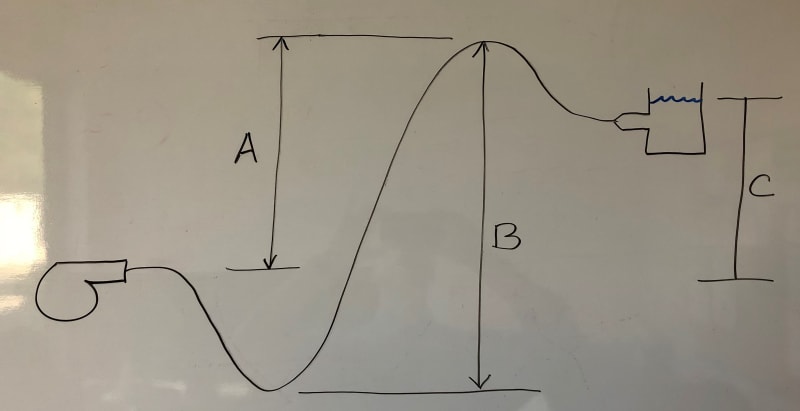Good morning. I haven't been able to get this question answered with a moderate amount of research, but it's always bothered me. When working with pumping systems, specifically wastewater lift stations, the discharge static head is generally defined as the elevation difference between the discharge liquid elevation and the centerline of the impellor. My question is, should additional head be added if the pipeline dips below the impellor level or rises above the discharge liquid level? It seems to me that things should have an effect. I've included a sketch to accompany my question. Would the discharge static head be A, B, or C? Or something else that I have not considered.
Thank you in advance.

Thank you in advance.

